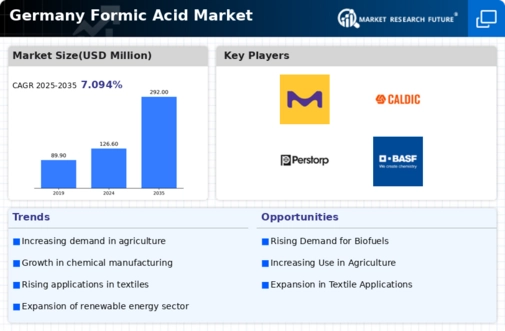The Germany Formic Acid Market is characterized by a competitive landscape that comprises several established and emerging players, each vying for market share through strategic initiatives and innovations. The market's dynamics are influenced by factors such as increasing demand from various end-use applications, including agriculture, leather production, and chemical synthesis, alongside the evolving regulatory framework that governs chemical manufacturing and usage. As a result, companies in this sector are focusing on optimizing their production processes and investing in sustainable methods to enhance their competitiveness.
Furthermore, the innovation in applications for formic acid bolsters the market potential while companies strategize to address customer requirements and adapt to market trends. Merck Group stands out as a significant player within the Germany Formic Acid Market, owing to its strong market presence and wide-ranging capabilities. The company has leveraged its extensive research and development framework to innovate and improve the quality of formic acid products. Its solid operational infrastructure provides robustness in the production and distribution of formic acid, allowing Merck Group to meet the demands of various industries efficiently.
Furthermore, the company's commitment to sustainability aligns with the growing environmental consciousness among customers, thereby enhancing its brand value. Merck Group fosters collaborative partnerships and continuously engages in capacity expansions, ensuring it remains at the forefront of the market dynamics unfolding within Germany. Hualu Hengsheng has carved out a notable position in the Germany Formic Acid Market, focusing on delivering quality products and maintaining competitive pricing. The company specializes in the production of formic acid, catering to industries such as agriculture, textiles, and pharmaceuticals.
Hualu Hengsheng's strengths lie in its advanced manufacturing facilities and robust supply chain management, which allow for the consistent delivery of high-quality formic acid. The company has actively pursued mergers and acquisitions to strengthen its market presence and expand its operational capabilities within Germany. By enhancing its product portfolio and improving production efficiencies, Hualu Hengsheng effectively responds to the evolving demands of the market, solidifying its position as a key player in the German formic acid landscape.















Leave a Comment